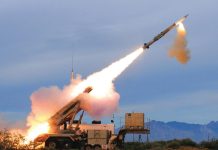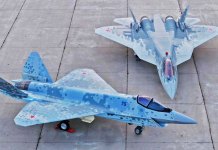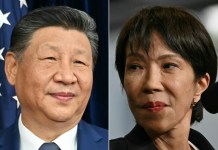Taiwan has built its advanced Brave Eagle jet giving a boost to the domestic defence industry to counter the Chinese aggression. Taiwan’s armed forces are mostly equipped by the US but Taiwanese President Tsai Ing-Wen tapped the state-owned Aerospace Industrial Development Corporation to design and build 66 new training jets as part of a deal worth $2.2 billion.
Taiwan’s New ‘Training Jets’ Are Capable Bombers That Can Strike Deep Into China
The Brave Eagle jet is more than a trainer jet. It is also a front-line warplane. According to David Axe, a US military correspondent and an author, the Taiwanese air force possess around 300 front-line fighters—a mix of American-made F-16s, French Mirage 2000s and AIDC’s own F-CK-1s. A large fleet of three-decade-old AT-3 and F-5 trainers supports the combat fleet.
“To the basic F-CK-1 airframe, AIDC’s engineers added a two-seat cockpit, new avionics, a thicker wing, more fuel capacity, composite components and—reportedly—a small electronically-scanned-array radar, although the latter feature is difficult to confirm,” he wrote.
At the time when Taiwan was considering options to replace its old training planes, Italy’s M-346 and the South Korean T-50 made it to the list of candidates. However, President Tsai Ing-wen wanted indigenous planes that resulted in Brave Eagle jet that took its maiden flight in June.
“The Yung Yin … not only represents a leap in development for our aerospace industry, but also the creation of 2,000 jobs and enhancement of [jet building] experience, as well as the culture of a new generation of aerospace technicians,” Tsai said at the inaugural flight ceremony.
Cross-Strait relations with mainland China have been deteriorating with Beijing claiming sovereignty over the island and seeking its return to the mainland fold even by force if necessary. It has staged several drills and is firm on its motives. However, after winning a landslide victory in January, Tsai, from the independence-leaning Democratic Progressive Party, began her second four-year term in May. She has refused to accept the one-China principle and is strongly supports the self-governance of Taiwan.
“In the time of war, once the Brave Eagles are loaded with missiles and bombs, they would be capable of providing support for the navy and air force in cross-strait conflicts,” said Su Tzu-yun, a research fellow at the military-affiliated Institute for National Defence and Security Research.
Su added that jet was considered one of the world’s most advanced trainers because of its fully digitised cockpit and software designed to simulate a lead-in fighter trainer capable of firing missiles, enabling it to calibrate its training courses more precisely. The air force is expected to take delivery of 66 the Brave Eagles by 2026.
According to Axe, the Brave Eagle includes many foreign-made components—in particular its American engines. “Washington provides the F125s to Taiwan as part of a government-to-government deal. When in 2019 Beijing threatened to sanction Honeywell over the transfer, the company simply shrugged and said it had nothing to do with the deal.”
Honeywell originally developed the F125 along with Taiwanese firm International Turbine Engine Company. This means that the Taiwanese company preserves its expertise and if necessary can produce engines locally.




